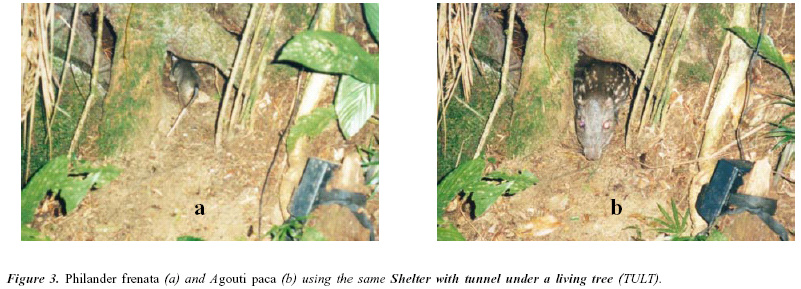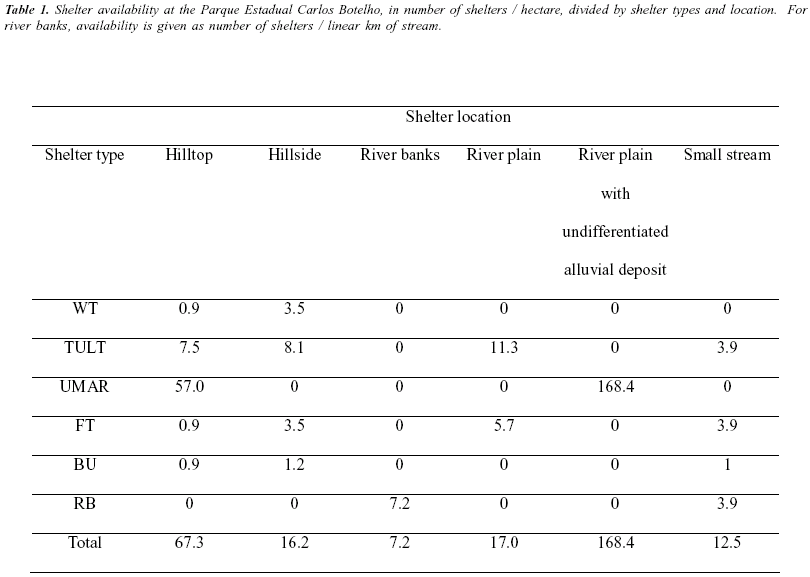This paper describes the types of ground-level shelters, their availability and use by mammals and birds at Parque Estadual Carlos Botelho (PECB), an Atlantic forest area at southeastern Brazil. Eight types of shelters were found: shelters without tunnels under living trees, shelters with tunnels under living trees, shelters under mounds formed by adventitious roots, shelters under fallen trees, burrows not supported by trees or roots, riverbank shelters, stream tunnels and rock shelters. Mammal species that used shelters more frequently were Agouti paca, Philander frenata, Lontra longicaudis, Metachirus nudicaudatus and Trinomys iheringi. Utilization of shelter types and shelter topographic locations by these six species was roughly similar to the proportions in which shelters of different types and locations were monitored, with the exception of otters, which are semi-aquatic mammals and used mainly riverbank shelters. Contrary to expectations, animals did not choose shelters with entrances fitted to their sizes. Shelters were used either by a single species or by different species. I hypothesize that at the PECB other factors such as microclimate inside shelters must be more important in determining shelter use than shelter external characteristics or topographic location. Some species, as coatis Nasua nasua and probably small didelphids and birds, enter shelters to search for invertebrates and small vertebrates.
Shelter site; Atlantic forest; resource availability; Mammalia; Aves











